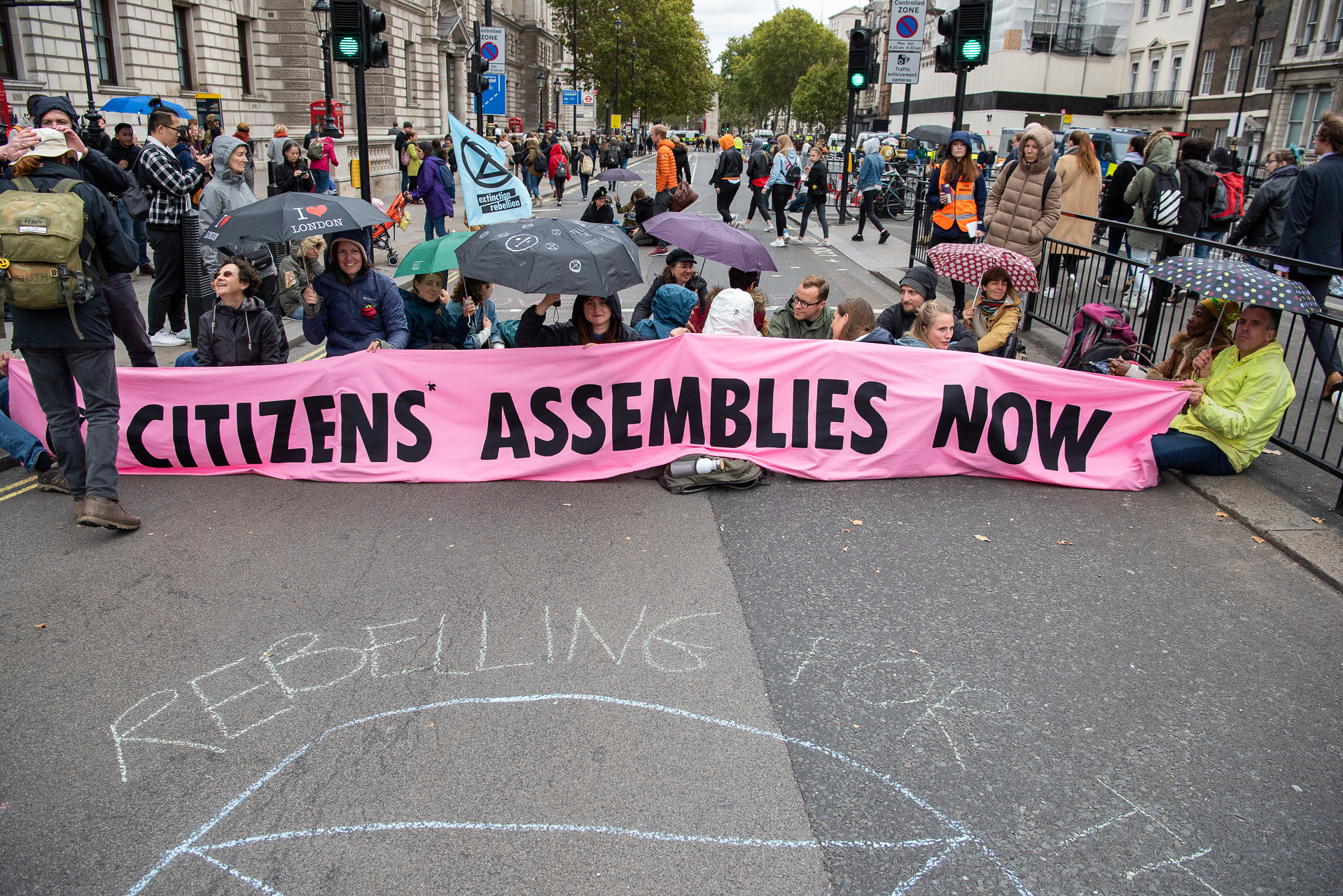 Polly Vizard assesses the suite of metrics the government proposes to use to measure the delivery of its ‘levelling up’ objectives, and which will remain relevant if the policy is not dropped by Boris Johnson’s successor.
Polly Vizard assesses the suite of metrics the government proposes to use to measure the delivery of its ‘levelling up’ objectives, and which will remain relevant if the policy is not dropped by Boris Johnson’s successor.
The launch of the Conservative Party’s leadership campaign raises important questions about the future of the government’s levelling up strategy and whether this can outlast Boris Johnson. In addition, the current turmoil leaves the new Minister for Levelling Up with a substantial in-tray. Even before Michael Gove was sacked, fundamental doubts were being raised about delivery and resource and policy adequacy. Another key unresolved issue relates to the suite of metrics that will be used to use to evaluate the delivery of levelling-up objectives (set out here).
If enacted, the Levelling Up and Regeneration Bill, which was introduced into Parliament following the Queen’s Speech in May 2022, will put the government’s levelling up programme on a legal footing. The bill includes requirements for the government to define its levelling-up objectives; to specify time-bound targets for delivery; and to set out the methodology and metrics it will use to report on progress.
While this emphasis on accountability and metrics as part of an overall ‘policy regime’ for addressing inequalities is welcome, our new social policies and distributional outcomes infographic identifies eight key areas of stalling progress that were already apparent in early 2020 – before COVID-19 and the cost-of-living crisis struck – several of which are not reflected in the levelling-up metrics:
- Child poverty;
- In-work poverty;
- Life expectancy inequalities;
- Unmet need for care;
- Educational inequalities;
- Inequalities in early childhood;
- Homicide inequalities;
- Homelessness.
The infographic shows that by the end of the 2010s, progress in tackling social disadvantage and inequalities had slowed down, stalled and/or gone into reverse against key indicators spanning different critical areas of life. The adverse trends were not limited to living standards but also affected education, health, and physical safety and security. A basic minimal requirement of any inequalities plan for the 2020s is the guarantee of a return to social progress in relation to each of these key outcomes.
On a positive note, the government’s proposals on metrics are less narrow than was initially feared. Each of the twelve levelling-up missions – set out in a February 2022 white paper – has its own suite of metrics for evaluating success, including a headline indicator and multiple supporting indicators. These do not focus exclusively on growth, productivity, and infrastructure and include measures of educational attainment, healthy life expectancy, wellbeing, and homicide. This reflects the insight in the white paper that six interdependent types of capital (including human and social capital as well as physical capital and economic resources) are required to kickstart economic and social change in left-behind areas.
Poverty
However, with the cost-of-living crisis escalating and threatening deprivation in essentials such as food and heating for millions, a credible suite of metrics must include progress in reducing income poverty – including child poverty – as a key indicator and yardstick of success. The first of the government’s levelling-up objectives includes living standards, while the first deliverable sitting under this objective (Mission 1) is specified in terms of pay, employment, and productivity. Proposed metrics include gross value added per hour, skilled employment, median and low pay, employment rates and gaps, gross disposable household income and children in ‘workless households’. Specific indicators of household income poverty and child poverty are not proposed and measures of food poverty, fuel poverty, and homelessness are also absent.
Housing
On housing, the white paper provides recognition of the role of housing in building up human, social, and physical capital, and of the importance of housing disparities in relation to living standards, health, and wellbeing. The 2019 Conservative Party manifesto pledged to ‘build back better’, including by delivering a million new homes over the next Parliament; and while there is slippage against this target, metrics on housing supply and new home ownership are taken forward under Mission 10. Metrics on housing decency are also specifically included. The role of social housing is highlighted in the analytical section of the white paper and plans for a social housing regulation bill are flagged up. Announcements on decency standards together with measures on tenancy security in the private rental sector (including no-fault evictions) have been received positively by housing charities and taken forward in a separate white paper.
Education and skills
On education and skills, while the government’s failure to fully fund education pandemic catch-up recommendations is a major concern, the new lifetime skills guarantee, set out in a separate white paper, is an important advance and apprenticeship new starts are included in the proposed levelling-up metrics. Additional measures will, however, be required to capture how well the needs of the substantial current cohorts who lack GCSE attainment in English and maths are being met. Recognition of early years as a form of human capital is an important advance but the associated metrics being proposed are overly restrictive.
Health
The focus of Mission 7 on healthy life expectancy (including gaps) is welcome as is the inclusion of childhood obesity as a metric. On delivery, the white paper and levelling-up minister Michael Gove’s statements have referred to a new strategy to tackle the root causes of health disparities as well as the recommendations of the Henry Dimbleby Food Review. However, the government’s white paper on health disparities is still unpublished. Delays to buy-one-get-one-free and junk food advertising restrictions, the omission of key anti-obesity measures from the government’s food strategy and increasing inadequacy of free school meal arrangements in the wake of the cost-of-living crisis, have also raised concerns about the direction of travel. Mental health is omitted from the proposed metrics under Mission 7 – although a measure of anxiety is included along with life satisfaction metrics under wellbeing.
Social care
On social care, the absence of an indicator of disabled and older people’s access to care is another key concern. The development of an indicator of inequalities in unmet need for care amongst the over 65s has been a focus of the social policies and distributional outcomes research programme, and we recommend an expansion of the ‘Levelling up’ metrics to include this measure.
Physical safety and security
On physical safety and security, the inclusion of a homicide indicator within the suite of ‘levelling up’ metrics is important. However, the concept of safer neighbourhoods set out in the white paper should be broadened to address violence behind closed doors and the issue of domestic homicide should be made visible within levelling-up measures and metrics.
Breakdowns by small area deprivation
It is essential that metrics for measuring and tracking progress in the delivery of levelling-up objectives are made available at a range of different geographies including at the neighbourhood level with coverage throughout the country. The recent local and byelection results have suggested that voters in the South may need some convincing that levelling up is relevant to their lives. However, the underpinning analytical framework set out in the white paper is explicit that geographical inequalities are not exclusively about the North-South divide or gaps with London. It emphasises that geographical inequalities occur within as well as between regions and local authorities including at a hyper-local level. These insights must be captured and reflected in the government’s approach to metrics – with breakdowns by small area deprivation.
Subgroup disaggregation
Subgroup disaggregation will also be key. While the white paper ‘data availability’ exercise was limited to region and local authority, a commitment to further breakdowns including by age, disability, ethnicity, and gender is flagged up.
Conclusions
Critically, the white paper proposals on metrics are described as preliminary and as being neither ‘exhaustive’ nor ‘definitive’. Plans to consult are flagged up. Addressing key omissions and shortcomings and embedding a more granular approach to metrics and building up levelling-up data infrastructure will be essential. Our infographic and indicator set offer a starting point.
_____________________
Note: the above is an adapted version of a blog that was first published on LSE Business Review on June 28th. The infographic has been produced as part of the Social Policies and Distributional Outcomes (SPDO) research programme funded by the Nuffield Foundation.
 Polly Vizard is Associate Professorial Research Fellow and Associate Director of the LSE Centre for Analysis of Social Exclusion.
Polly Vizard is Associate Professorial Research Fellow and Associate Director of the LSE Centre for Analysis of Social Exclusion.







